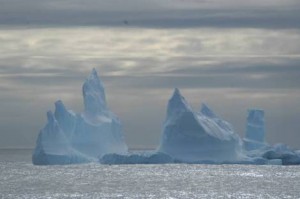Most people don’t go to Antarctica unless or until they’ve been most everywhere else they want to go. Even though Antarctica is bigger in land mass than Europe and Australia, it is 99.6% covered in snow and ice and the winter population of the continent is 1,200 – at 43 research bases. The most frequent reaction I got from friends when I told them I was going to Antarctica was, “Why?” The adventure of it all appealed to me as did the opportunity to see penguins in their native habitat and also to see icebergs close up. The 19 day trip began with a day of interesting sight seeing in Buenos Aires. From there we flew to Ushuaia, Argentina, the “southern most city in the world” where we boarded a cruise ship that took us from Tierra del Fuego across the famous and treacherous Drake Passage to Antarctica. During the two day crossing (each way) we encountered 45 knot winds and 40 foot seas – not nearly as bad as it could have been, but enough to keep 70% of the passengers with barf bags handy! As we approached the continent we saw an iceberg 3,000 feet long and 60 feet high (and 90% of an iceberg is out of sight, under water!) What a thrill. An hour later we were in an iceberg field that had hundreds of large, absolutely unique and spectacular bergs floating by in one of the most beautiful scenes I have seen anywhere.
For several days we cruised off the coast of various islands and the Antarctic landmass. Each day we landed in eight person Zodiac rafts to see penguins, seals, research bases, old whaling stations, and nature at its icy, wintry best (though it was “summer”, with temperatures in the 20s and 30s.) While no Norwegian passenger cruise ship had ever made it all the way to the Antarctic Circle, our captain said that the weather was right and we took a 14 hour “detour”, due south, and reached the Circle (66 degrees, 33 minutes South) just after midnight one night. We were also lucky on this trip to be able to stop at Cape Horn, the famous meeting point of the Atlantic and Pacific Oceans at the tip of South America. Two-thirds of cruise ships are not able to stop here because the weather is frequently so inhospitable, but we were lucky. There is a large sculpture of an albatross dedicated to all the sailors who lost their lives going “Around the Horn” over the past four centuries and after twice crossing the Drake Passage, it was very clear how lives could easily have been lost. The last part of our cruise was through the southern Chilean fiords with stops in four Patagonian towns before ending up in Santiago, Chile. If you’ve got the stomach for it, I would highly recommend this trip.
“I shall be telling this with a sigh somewhere ages and ages hence: Two roads diverged in a wood, and I – I took the one less traveled by, and that has made all the difference.” Robert Frost




